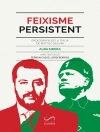The third volume of Aspects of the Orange Revolution complements the essays of the first two collections providing further historical background on, and analytical insight into, the events at Kyiv in late 2004. Its seven contributions by both established and younger specialists range from electoral statistics to musicology, and deal with, among other issues, such questions as: Why had blatant election fraud not generated mass protest before 2004, but, in that year, did? How was Viktor Yushchenko able to collect enough votes to defeat the establishment candidate Viktor Yanukovych, and become the new President of a socially, geographically and culturally divided country? How was it possible to prevent large-scale violence, and which role did the judiciary play during the quasi-revolutionary events in autumn-winter 2004? What legal foundations and court decisions made the repetition of the second round of the presidential elections possible? Which campaign instruments, and political ‘technologies’ were applied by various domestic and foreign actors to activate the Ukrainian population? How did the internet and music become factors in the emergence of mass protests involving hundreds of thousands of people? To which degree and how did external influences affect the Orange Revolution?Erik S. Herron, Paul E. Johnson, Dominique Arel, Ivan Katchanovski, Ralph S. Clem, Peter R. Craumer, Hartmut Rank, Stephan Heidenhain, Adriana Helbig and Andrew Wilson present a multifarious panorama of the origins and dynamics of the processes that changed the nature of political and civic life during and between the three rounds of Ukraine’s fateful 2004 presidential elections.
लेखक के बारे में
The editors:Dr. Ingmar Bredies is DAAD Lecturer in Political Science at the National University of Kyiv – Mohyla Academy.Dr. Andreas Umland is DAAD Lecturer in German Studies at the National Taras Shevchenko University of Kyiv.Dr. Valentin Yakushik is Professor of Political Science at the National University of Kyiv – Mohyla Academy.












